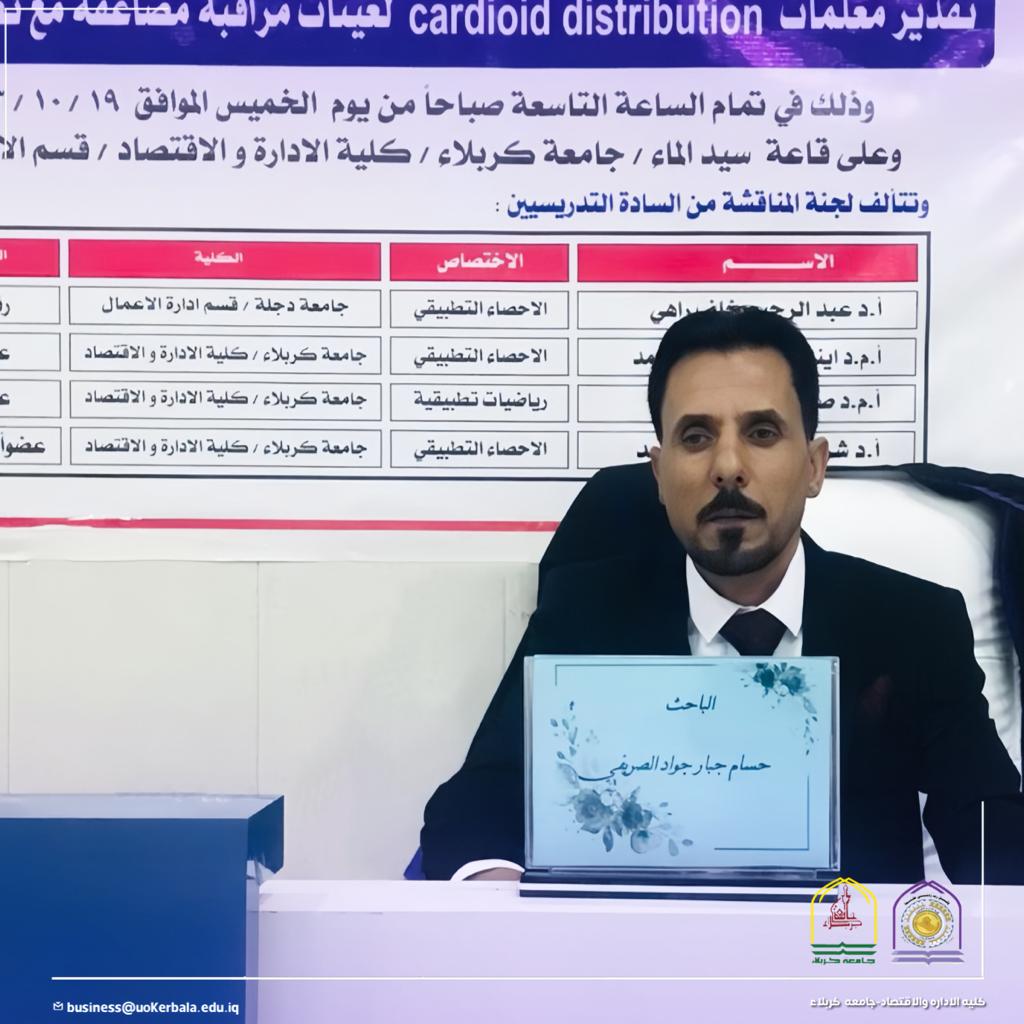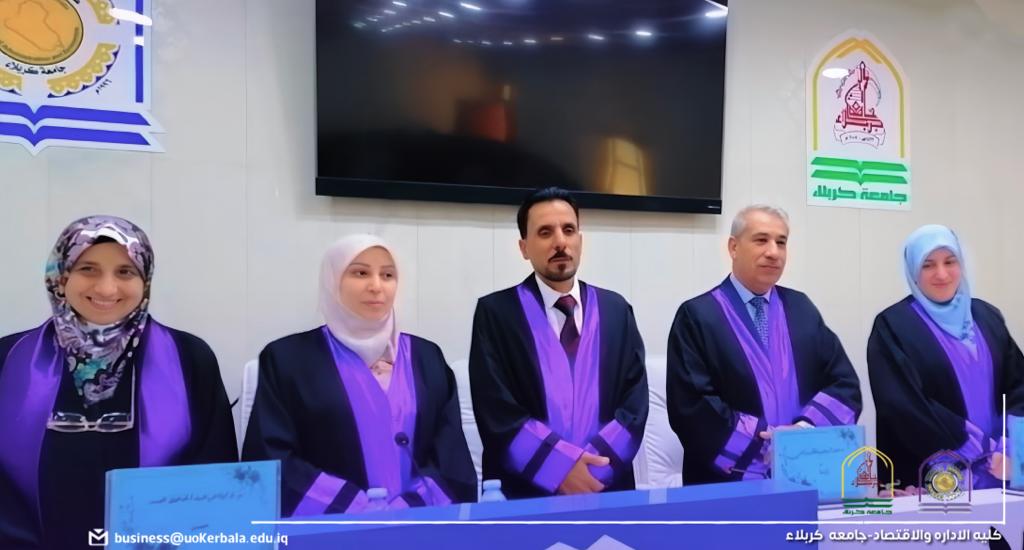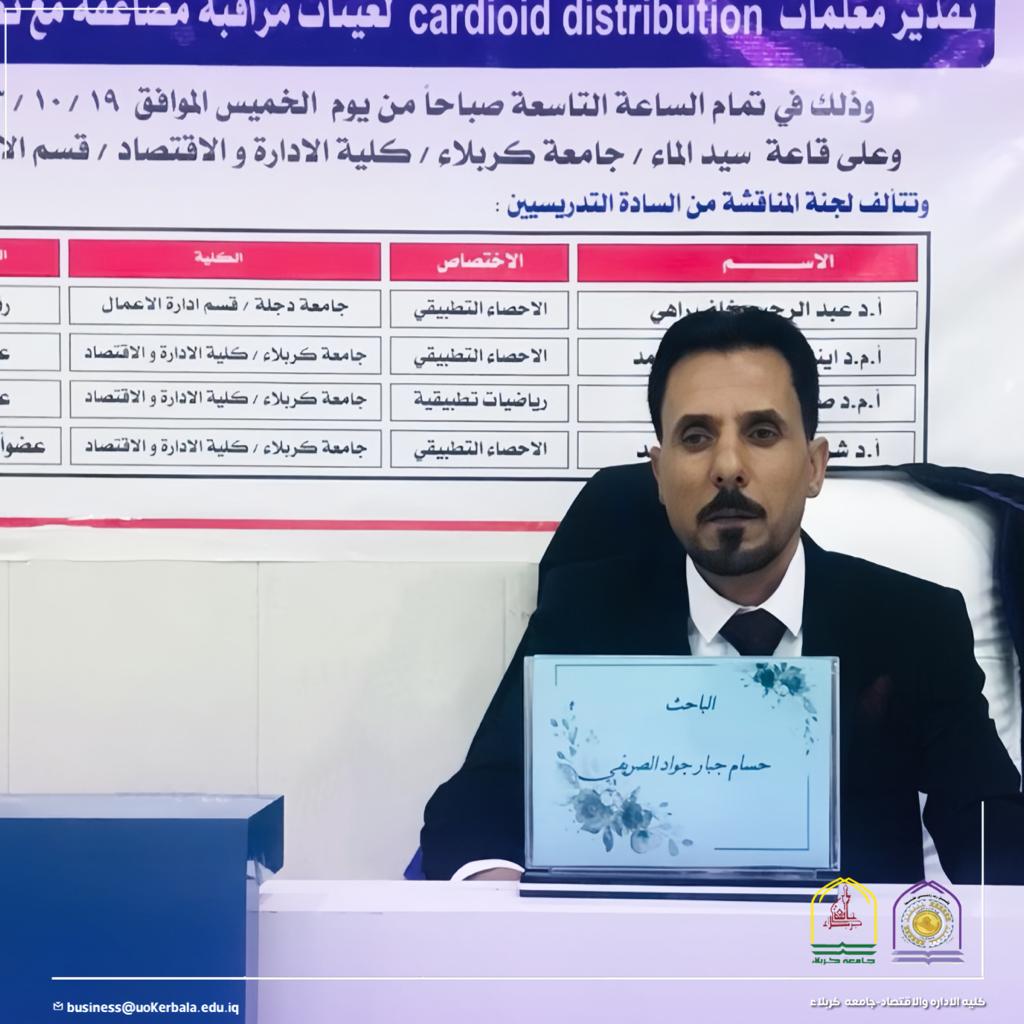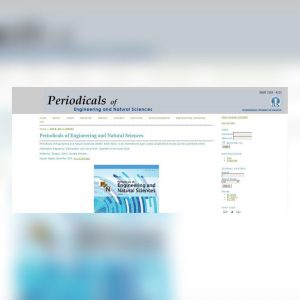Estimation of Cardioid Distribution Parameters
for Doubly Censored Samples with an Application
A thesis
Submitted to the council of the college of Administration
&Economics\ University of Karbala as partial fulfillment of the
requirements for the Master degree in Statistics Sciences
By
Hossam Jabbar Jawad Al-Sarifi
Supervision
Prof. Dr. Shorouq Abdul-Reda Saeed Al-Sabbah
Abstract
Cardioid distribution is a special case of von Mises distribution and has many important applications in different fields. It is one of the important distributions in modeling circular data, as the values are restricted to a circular range, such as angles or directions, such as wind directions, compass bearings, and animal movement directions. Cardioid distribution provides a simple and flexible framework to capture the circular nature of these data. It is a valuable tool for modeling data with circular characteristics. It provides a convenient way to describe these data and draw conclusions about them. It can help to reveal meaningful patterns and relationships in circular data sets.
This thesis aims to estimate the parameters of cardioid distribution under doubly censored data by using three estimation methods: maximum likelihood method, Bayesian method, and Cramer-von Mises method. The comparison between these methods is carried out using Monte Carlo simulation experiments to reach the best estimation method. It has been found that maximum likelihood method is the best among the other estimation methods, especially for large sample sizes (n=50, 75, 100),followed by Cramer-von Mises method, and finally Bayesian method for
small sample sizes (n=10, 30).
The second objective is to use real data representing wind direction in Iraq, which were obtained from the General Authority of Meteorology and Seismic Monitoring of Iraq for the year (2022). These data consist of (100)
observations measured in degrees at 6:00 AM and 12:00 AM to estimate the parameters of cardioid distribution using maximum likelihood method.
It has been found that the estimated probability density function values are suitable for the true probability density function values. The probability density function curve of cardioid distribution estimated by maximum likelihood method is more suitable for real data. When the wind direction angle is (6.10) degrees, there is a 27% probability of an increase in wind intensity.
When the wind direction angle is (0.07) degrees, there is a 17% probability of an increase in wind intensity.
The most common angle is the most probable, which is (4.12), and the least common angle is the least probable, which is (0.07).

































































